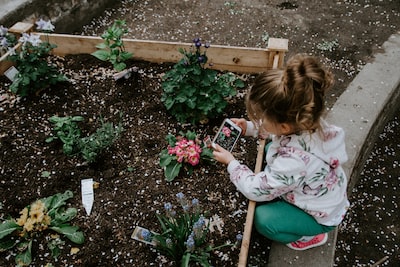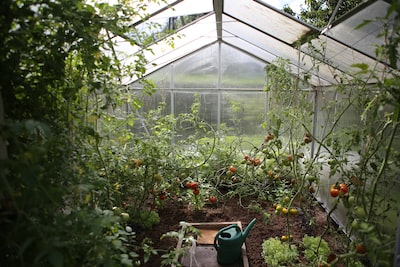When it comes to creating a serene garden design, we must embrace the delicate art of balance. From the interplay of colors to the arrangement of plants, every element contributes to the overall tranquility of the space.
In this article, we dive deep into the world of garden self-sustenance, exploring the seamless integration of nature’s bounty with our everyday needs. Imagine plucking fresh herbs for a flavorsome meal, or harvesting vibrant vegetables for a homegrown feast.
With the right knowledge and a touch of creativity, your garden can become a sanctuary of self-sustenance, providing both nourishment and solace. Join us on a journey from planting the seeds of curiosity to reaping the bountiful rewards, as we unveil the secrets to cultivating a self-sustaining oasis in your own backyard.
Prepare to immerse yourself in the world of Seeds to Supper, where nature and nourishment intertwine in perfect harmony. Courses are available around the country at universities and county extensions.
Table of Contents
Benefits of Growing Your Own Food
Growing our own food not only brings satisfaction but also offers many benefits. Freshly harvested produce tastes better than store-bought. Additionally, gardening helps the environment by reducing long-distance transportation and packaging waste.
To start, choose plants based on your climate and available space. Use the right gardening tools and learn techniques like composting and watering for success. However, pests and diseases may appear, so take preventive action. Stay informed and use organic pest control methods to maintain a thriving garden.
When it’s time to harvest, enjoy the satisfaction of eating homegrown fruits and vegetables. Explore the world of gardening and experience the fulfillment of self-sufficiency through this timeless practice.
Getting Started: Choosing the Right Plants
Assess the available space and sunlight in your garden. Some plants, like tomatoes and peppers, need full sun, while leafy greens and herbs can handle partial shade. Also consider soil quality and drainage. Carrots and radishes thrive in loose, well-drained soil, while blueberries prefer acidic conditions.
Additionally, think about your preferences and dietary needs. Do you want to grow fruits, vegetables, or herbs? Research different plants’ growth habits and requirements, then choose a diverse selection that suits your taste and lifestyle. Selecting the right plants sets you up for a rewarding growing season.
When choosing plants, it’s important to consider compatibility and companion planting. Some plants benefit each other, repelling pests, attracting good insects, or providing shade and support. For example, planting basil and rosemary with tomatoes deters harmful pests and improves tomato flavor. Marigolds repel nematodes, making them great companions for tomatoes and cucumbers.
However, some plant combinations should be avoided as they may compete for resources or attract pests. Research or consult a gardening guide to discover good companions and plants that should be kept separate. Companion planting creates a harmonious and thriving garden ecosystem that maximizes plant health and productivity.
Essential Garden Tools and Techniques
A successful garden requires the right tools and techniques to thrive. Essential garden tools include a sturdy trowel for digging, a hand cultivator for weeding, and a garden rake for soil preparation. Additionally, investing in quality garden gloves and a durable watering can make the gardening experience more comfortable and efficient. Proper technique is also crucial. Knowing when and how to sow seeds, transplant seedlings, and prune plants can significantly impact their growth and productivity. Consulting reputable gardening resources can provide valuable guidance and tips on using these tools and mastering various gardening techniques.
In addition to the right tools, employing proper gardening techniques can make a significant difference in the success of your garden. Proper watering, for example, is critical to ensure plants receive enough moisture without drowning their roots. Watering at the base of plants and avoiding leaf wetting can help prevent diseases. Mulching is another valuable technique that helps retain moisture, suppress weeds, and regulate soil temperature. Proper weed control, by hand weeding or using organic weed suppressants, is vital to prevent unwanted competition for nutrients and sunlight. Furthermore, practicing crop rotation can help reduce the risk of soil-borne diseases and maintain soil fertility. By implementing these essential tools and techniques, you can optimize your gardening efforts and enjoy a flourishing garden all season long.
Tackling Common Challenges and Pests
Identify and manage garden pests naturally and organically. Prevent and manage diseases in your garden. Dealing with garden pests is essential for maintaining a healthy garden. By identifying and managing these pests naturally and organically, you can avoid the use of harmful chemicals. This can be done through various methods such as using natural predators, introducing beneficial insects, or using organic pest control solutions.
In addition to pests, garden diseases can also threaten the health of your plants. Understanding how to prevent and manage these diseases can help keep your garden thriving. Implementing good gardening practices such as proper watering, providing adequate airflow, and practicing crop rotation can greatly reduce the risk of diseases spreading in your garden.
Deal with weeds and unwanted plants. Protect your garden from extreme weather conditions.
Weeds can quickly take over a garden if not dealt with properly. Taking the time to regularly remove weeds and unwanted plants can help maintain the overall health and appearance of your garden. Additionally, using mulch or ground covers can help suppress weed growth and keep them at bay.
Extreme weather conditions can pose a threat to your garden. It is important to take steps to protect your plants from these conditions. This may include providing shade during hot summer months, using row covers or protective structures during frost or heavy rain, and taking precautions to prevent soil erosion during storms. By being proactive in protecting your garden from extreme weather, you can minimize potential damage and ensure the longevity of your plants.
Harvest Time: Enjoying the Fruits of Your Labor
Harvesting your own fresh produce brings joy. Improve your harvest with these tips. Learn when to harvest different vegetables. Use proper techniques for better results. Enhance flavor and nutrition in your harvest. Store and preserve your bounty effectively.
voicedrop.ai tagarticly.ai tag
Unleash Your Green Thumb with Expert Gardening Tips and Tricks from Home – The Waddle and Cluck
Head on over to Home – The Waddle and Cluck if you’re ready to dive headfirst into the world of homesteading. This magical place is a treasure trove of tips and tricks for all your homesteading needs, including gardening! Imagine the satisfaction of growing your own food, with tomatoes so plump and juicy you can practically taste the summer sunshine.
At The Waddle and Cluck, you’ll find expert advice on everything from choosing the perfect seeds to nurturing your plants with love and care. Whether you have a sprawling backyard or just a small balcony, we have gardening secrets to suit every space.
So, roll up your sleeves, grab a shovel, and get ready to cultivate a green thumb like never before. Your taste buds will thank you!
Frequently Asked Questions
Seeds to Supper is a gardening program designed to teach individuals the skills and knowledge needed to grow their own food and achieve self-sustenance.
Seeds to Supper is open to everyone, regardless of gardening experience or available space. It is suitable for beginners as well as more experienced gardeners.
In Seeds to Supper, participants will learn various gardening techniques, including soil preparation, seed starting, transplanting, pest control, and harvesting. They will also gain knowledge about sustainable gardening practices and how to maximize food production.
The Seeds to Supper program usually lasts for a duration of 6-8 weeks, with weekly sessions covering different topics and hands-on activities.
Seeds to Supper is a low-cost program, and in many cases, it is free. However, some locations may charge a nominal fee to cover the cost of materials or resources provided during the program.
No, you do not need a large garden space to participate in Seeds to Supper. The program emphasizes a variety of gardening techniques suitable for containers, raised beds, or small plots, making it accessible to individuals with limited space.
No, Seeds to Supper is for anyone interested in learning about gardening and growing their own food, whether it be for self-sustenance or simply to enjoy fresh produce from their garden.
Absolutely! Seeds to Supper aims to provide individuals with the necessary knowledge and skills to continue gardening and sustain their own food production even after the program ends. Ongoing support and resources may also be available.
Finishing Up
In a world often defined by fast food convenience and grocery store abundance, the act of growing and cultivating your own food might seem like a distant practice from times long past. And yet, an increasing number of individuals are rediscovering the joys and benefits of gardening.
It’s a quest that transcends the mere act of planting seeds in soil; a journey that reconnects us with nature, seasons, and the wonder of life itself.At its core, gardening is a testament to the transformative power of patience and persistence.
As we carefully nurture our plants from seedlings to full-fledged produce, we gain a deeper appreciation for the cycles of growth and the interconnectedness of all living organisms. The unpredictable dance between sun and rain, soil and microbes, pests and beneficial insects, creates a symphony of rhythms and harmony that unfolds before our very eyes.
But beyond its poetic allure, gardening offers a tangible bounty of rewards. The satisfaction of plucking a ripe, succulent tomato straight from the vine cannot be replicated by any store-bought counterpart.
The flavors of homegrown herbs and vegetables burst on our taste buds, tantalizing our senses with their unparalleled freshness and vibrance. Moreover, the simple act of tending to a garden provides a therapeutic escape from the hectic pace of modern life, allowing us to find solace in the nurturing embrace of nature.
In today’s world, where concerns about food safety and sustainability are mounting, growing your own food becomes an act of rebellion against a system that often prioritizes quantity over quality. It empowers us to take control of what we consume, to break free from the chains of commercial agriculture and invasive pesticides.
By choosing to plant and harvest our own vegetables, we become guardians of our health and the environment, contributing to a greener, more self-sufficient future.So, whether you have a spacious backyard or only a windowsill to spare, consider embarking on your own gardening adventure.
Start small, with a few potted herbs or a humble bed of salad greens. Embrace the trials and tribulations that come with coaxing life from the earth, for in the struggles lie the sweetest victories.
Rediscover the simplicity of growth, and cultivate a connection with the natural world that will nourish your body and soul.













